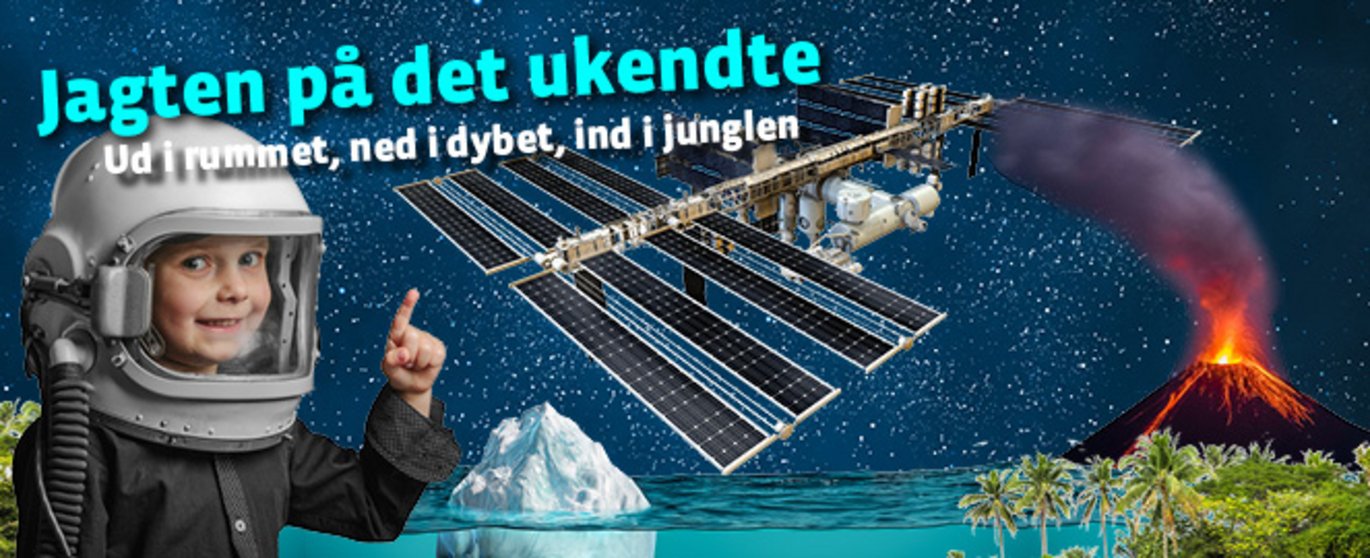Take your family on a "polar expedition" during the winter holidays
Robots, drones, autonomous boats and smart probes. A cellar at Aarhus University holds an impressive collection of technological inventions for polar research. Selected examples are on display to the public for the first time at the Steno Museum's winter holiday exhibition in mid-February.

![[Translate to English:] [Translate to English:]](/fileadmin/ingen_mappe_valgt/polar.jpeg)
![[Translate to English:] [Translate to English:]](/fileadmin/ingen_mappe_valgt/1953.martingravgaard.jpg)
In just a few years, Danish researchers and engineering students have created the world's perhaps most comprehensive and innovative portfolio of new technology for climate research. The many inventions were designed and built specifically for the harsh conditions in our northern hemisphere, and now AU Engineering is showing some of the most ground-breaking examples to the public at the Steno Museum's winter holiday exhibition.
"The technology has given us completely new opportunities to study the consequences of global warming. We’ve been given a goldmine of data we can use to understand what happens when the ice melts," says Claus Melvad, senior professor of engineering at the Department of Mechanical and Production Engineering at Aarhus University.
Claus Melvad is the pioneer behind the collection, and together with his students, he has managed to make a clear mark on the results of international climate research in recent years.
Read the article about Claus Melvad's research and many polar expeditions here
The important salt balance
At the Steno Museum in Aarhus, the public can see a wide range of inventions for climate research during the winter holidays.
In the Planetarium, you can join an underwater robot on an expedition under the sea to scan an iceberg.
You can see drones that help researchers carry out dangerous tasks on the ice.
If you are curious, you can ask questions about the robots, autonomic boats and intelligent buoys that are all collecting samples from the water and measure how the fresh melt water from the ice mixes with the salty seawater. And maybe you want to know why? Why is it so important to meassure this mix?
Because it is the core of the climate changes, says Claus Melvad:
"It’s hard to underestimate the importance of the salt balance for our planet. We need to know how the increased amounts of melt water affect the fine mechanisms that drive both Arctic ecosystems and ocean currents, and thus the whole global climate and cycles in nature."
Read more about the winter holiday exhibition at the Steno Museum (in Danish)
All staff and students at Aarhus University can visit the museum free of charge.
About the exhibition
During the winter holidays, visitors to the Steno Museum can experience a mass of different technology to explore the arctic area and meet engineering students who will talk about the many inventions.
Film: Secrets of the ice
Join engineering students on a polar expedition in the Arctic Ocean. They have built a robot that can navigate under water. Will they succeed in producing the world's first complete scan of an iceberg under water?
Drone
See a huge drone!
It can be very dangerous to get too close to an iceberg. Therefore, climate scientists use a drone to fly over the ice. It can make a 3D scan of the top of the iceberg, transport small robots to the iceberg, and take borings.
It is very difficult to get drones to operate around the Arctic Ocean because of the magnetic field. This means that the drone you can see at the Steno Museum has been built to fly without a compass.
Drill for ice cores
Icebergs are filled with minerals that originate from under the Earth. When the ice melts, the minerals spread into the fjords and are transported onwards out into the ocean. This provides nutrients for our primary production. Climate researchers want to study what global warming means for the mineral content of the sea and life in fjords. To this end, they drill cores out of the icebergs with a special drill on display at the Steno Muesset in the winter holiday.
"Silverfish"
The Steno Museum is exhibiting an orange version of the Silverfish. It is a brand-new underwater robot that has not yet been part of a polar expedition. This summer, it will join an international group of climate researchers in Greenland to investigate how the glaciers melts out at sea. It can measure salt content, depth, ultrasound, and turbidity, and it will help predict sea level increases more accurately.
NORDACC
NORDACC is an autonomous boat that takes samples of the sea's surface water. In the Arctic Ocean, fresh melt water from glaciers spreads out in a layer over the salty seawater, because it has a lower density. The researchers want to find out how salt water and fresh water mix, because this affects the entire fine mechanism that drives ocean currents and thus our climate and all of the cycles in nature.
ARCCOP Profiles
Arccop is an underwater robot that swims like a dolphin. It can dive down to 200 metres and returns to the surface, and it run for many months at a time because it does not need electricity or fuel. A small piston moves in and out to change the robot's density and control its position. Every time it comes up to the surface, it sends data from the ocean to researchers' computers.
And much more....
See you at Steno Museum!
